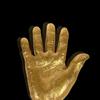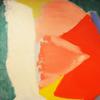Major Exhibition of Work by Pioneering Artist Dusti Bongé Travels to Mississippi Museum of Art
- JACKSON, Mississippi
- /
- January 06, 2020
The Mississippi Museum of Art has announced its presentation of Piercing the Inner Wall: The Art of Dusti Bongé, an expansive survey revealing the full range of the pioneering artist’s oeuvre. Considered Mississippi’s first artist to work consistently in a Modernist style, Dusti Bongé (1903–93) was active in New York’s dynamic art scene and creative communities which flourished along the Gulf Coast in the 1930s through the early 1990s. During her lifetime, she created a multifaceted body of work that transitioned from figurative and Cubist depictions of scenes of her hometown Biloxi in the late 1930s, through a period of Surrealism and into Abstract Expressionism that defines her mature work.
On view February 20 through May 23, 2021, the exhibition comprises 65 paintings, 29 works on paper, and three sculptures drawn from private loans and public institutions including works from the Museum’s own collection. Piercing the Inner Wall, a presentation in the Myra and Lynn Green Root Memorial Exhibition Series, provides a singular opportunity for visitors to experience a vibrant selection of work spanning Bongé’s prodigious career.
The Museum’s Chief Curator and Artistic Director of the Center for Art & Public Exchange Ryan Dennis (she/her) said, “While her friends and contemporaries included art-world luminaries such as Agnes Martin, Betty Parsons, Jackson Pollock, Robert Rauschenberg, and Clyfford Still, the recognition bestowed on Dusti Bongé at the time was slight in comparison. This exhibition illuminates the enduring presence and power of Bongé’s art and helps address this oversight.
While women have been historically—and notoriously—underrepresented in museum collections and galleries, change is happening. Bongé’s immense creativity, risk-taking, and dedication to her practice resulted in a body of work that holds its place in the canon of postwar American art. We are delighted to reintroduce this adventurous spirit to a wider audience with this stunning presentation.”
Organized by the Ogden Museum of Southern Art (the Ogden), New Orleans, where it debuted in 2019, the exhibition coincides with Dusti Bongé, Art and Life: Biloxi, New Orleans, New York, a comprehensive, richly illustrated publication. The author, J. Richard Gruber, Ph.D., Director Emeritus of the Ogden, examines Bongé’s life and times and reveals how her practice and artistic vision evolved. Through in-depth research and insights, Gruber explores Bongé’s artistic output from a regional and national perspective within cultural contexts of 20th century American art and society.
Following an early career as an actor, Bongé was inspired by her husband, the artist Archie Bongé. Whereas Archie had been a student at New York’s Art Students League and the Pennsylvania Academy of the Fine Arts, among others, he recommended that she forego traditional academy-based classes and, instead, follow her own aesthetic instincts and explore her natural talent. Two years after returning to Biloxi from New York to raise their young son Lyle and set up a studio, Archie died prematurely in 1936. Dusti found solace in the studio and began painting in earnest, experimenting with a range of styles. The exhibition showcases the breadth of her artistic investigations and experiments spanning most of the 20th century.
Dusti Bongé, Art and Life: Biloxi, New Orleans, New York, is available in The Museum Store.
Piercing the Inner Wall: The Art of Dusti Bongé, a presentation in the Myra and Lynn Green Root Memorial Exhibition Series, is presented with support from the Dusti Bongé Art Foundation.
Born in 1903 in Biloxi, Mississippi—a thriving seafood port city and resort destination—Dusti Bongé (nee Eunice Lyle Swetman) was the youngest of three children of a prominent banker. After graduating from Mississippi’s Blue Mountain College, she moved to Chicago to study acting. In the 1920s, she appeared on stage and in silent films there and in New York. In 1928, she married artist Archie Bongé (1901‒36) who encouraged her natural abilities as an artist. Their son Lyle was born a year later and the family moved to Biloxi in 1934. Archie built a studio in their backyard but, in 1936 he succumbed to ALS (Lou Gehrig’s disease). While raising Lyle and grieving for Archie, Dusti dedicated herself to her craft.
She initially exhibited in New Orleans and Biloxi until 1939, when her work went on view at the Contemporary Arts Gallery in New York City. Her art career advanced dramatically when she joined the roster of the renowned Betty Parsons Gallery in Manhattan. An artist and art dealer, Parsons was an early champion of the New York School and forerunners of Abstract Expressionism which was becoming a leading influence in the art world. In 1956, Bongé received her first solo exhibition at the Gallery, placing her in a select group of artists that included Barnett Newman, Jackson Pollock, Robert Rauschenberg, Mark Rothko, and Clyfford Still.
Continuing to be shown at Parsons Gallery until 1975, Bongé was a strong voice in the New York art scene for three decades. Throughout her career, however, Bongé maintained close ties to Biloxi where she continued to produce new work until two years before her death, in 1993.
For more information, visit msmuseumart.org

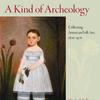


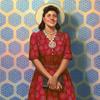
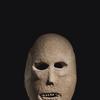


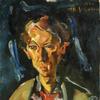

_Infinity_by_Santiago_Medina_PhotoCr100x100_c.jpg)
